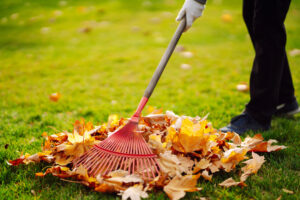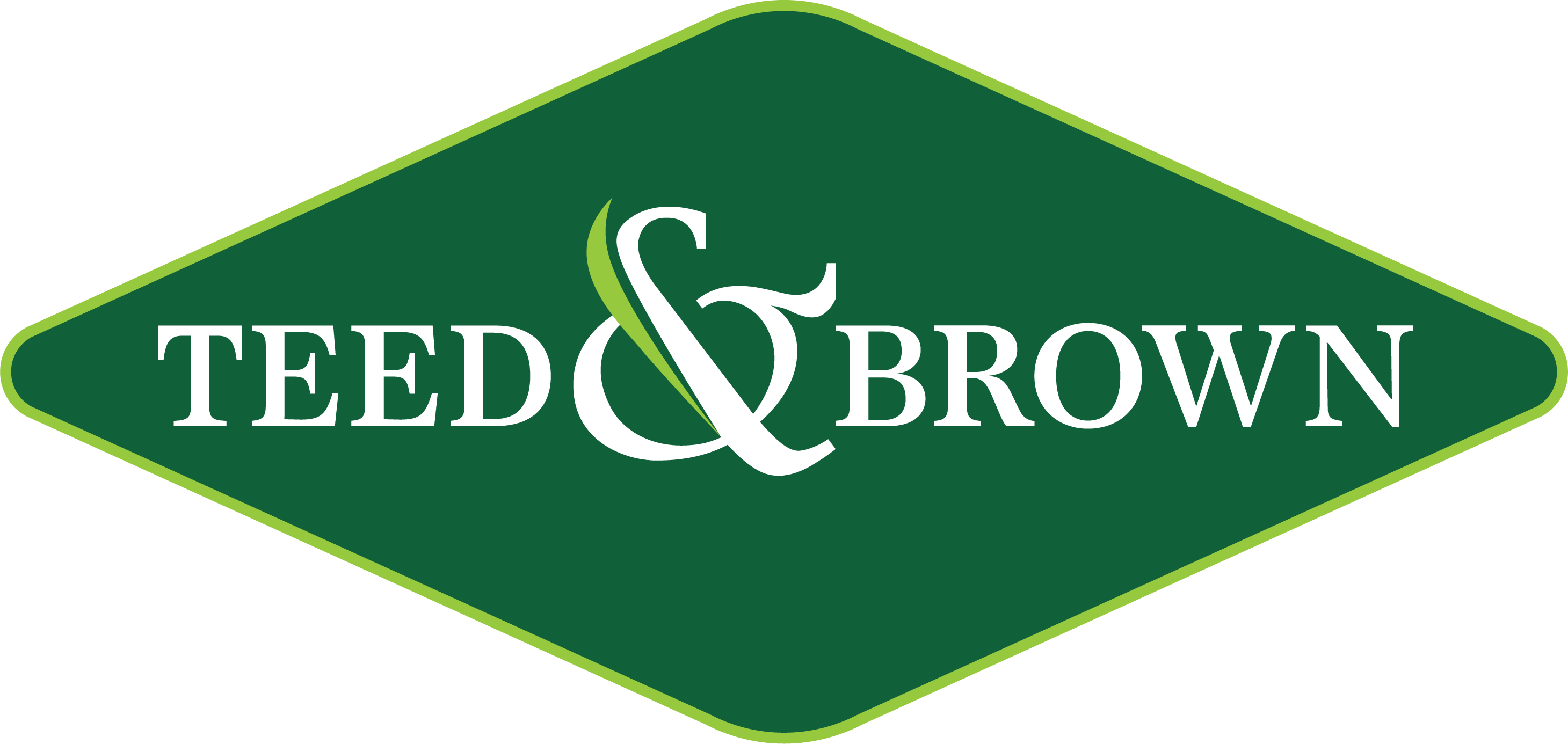Fall Lawn Care: What Steps Should You Take for a Healthier Yard?
About Fall Lawn Care: What Steps Should You Take for a Healthier Yard?
Fall Lawn Care: What Steps Should You Take for a Healthier Yard?

Table of Contents
- Why Fall Lawn Care Matters
- Most Effective Fall Lawn Treatments
- Fall Lawn Maintenance Tips
- Best Time to Schedule Fall Lawn Care
- Strengthen Your Lawn This Fall
- FAQ
As the warmth of summer slowly yields to the cool, crisp air of autumn, many people assume their lawn care efforts are done for the year. But in truth, fall is one of the most important seasons for setting up your lawn for success. The cooler temperatures, steady moisture, and active root growth create the perfect conditions to help grass recover from summer stress and prepare for the winter months ahead.
Focusing on treatments like aeration, overseeding, fertilization, and irrigation adjustments during the fall promotes renewed growth in the spring. Here at Teed & Brown, we use a specialized, science-driven approach to tailor each fall grass treatment to the unique needs of your property and the conditions of your local environment.
So, if you‘re looking for fall lawn care tips to help you get the most out of the season, stay tuned. In this blog, we‘ll cover the top treatments that matter now, explain how they prepare your lawn for winter, and show how they set the stage for greener growth in spring.
Why Is Fall Lawn Care Important?
Lawn maintenance in the fall is important because after months of warm weather and heavy foot traffic, your grass needs targeted treatments to restore its health and prepare it for the colder seasons ahead.
During autumn, cooler temperatures and increased soil moisture create the ideal environment for roots to grow deeper and stronger. This is when your lawn can recover from the stress of summer heat, dryness, and activity while also storing the nutrients it needs to withstand winter dormancy.
For homeowners who want a greener, thicker lawn in spring, fall is the season that makes all the difference. Proper care now helps ensure your grass doesn‘t simply survive the colder months but returns healthier and more vibrant once the weather warms up.
What Fall Lawn Treatments Make the Biggest Impact?
When it comes to lawn care in the fall, tailored treatments that restore what summer depleted are essential. Instead of fertilizing and calling it a day, the right combination of services strengthens your lawn now and sets it up for year-round success.
Core Aeration and Overseeding for Stronger Growth
Core aeration relieves compacted soil, opening channels that allow water, air, and nutrients to penetrate deeply—a key part of yard care in the fall. Pairing aeration with overseeding helps ensure new grass seed makes direct contact with the soil, leading to better germination and thicker turf. Fall‘s cooler air and consistent moisture make this the most effective season for professional core aeration and overseeding together. Learn more about fall aeration and overseeding for a deeper dive into timing, process, and benefits.
Fertilizing for Winter Strength and Spring Growth
Fall fertilization replenishes nutrients lost during summer and helps grass store energy before dormancy. When timed properly, it boosts root health, improves resilience through the cold months, and supports a faster, greener recovery in spring.
Soil Amendments to Improve Lawn Health
Adjusting pH and nutrient levels with soil amendments like limestone or gypsum is another important part of yard care in the fall, when milder temperatures create a healthier foundation for grass. With soil balanced ahead of winter, lawns can absorb fertilizer more efficiently and show improved growth once temperatures rise again.
Preparing Your Irrigation System for Winterization
With every temperature change comes the need to adjust your irrigation schedules, and during fall, in particular, it‘s necessary to scale back as grass growth slows. Reducing watering frequency helps conserve resources while still giving your lawn enough moisture before winter. Professional irrigation control management includes inspecting the system, winterization (blowing out sprinklers) to prevent frozen pipes, and calibrating controllers so everything is set for a smooth spring startup.
Pest and Insect Control Before Winter Dormancy
Addressing pest issues in the fall helps prevent insects like grubs and chinch bugs from damaging roots as the lawn heads into dormancy. Plus, treating infestations as part of your lawn maintenance for fall stops problems from carrying over into spring and keeps turf healthier through winter.
While professional fall lawn treatments build the foundation for long-term health and resilience, your own maintenance habits work in tandem to make a noticeable difference.
Which Fall Lawn Maintenance Tasks Can You Do Yourself?
While professional services are the most effective way to keep your lawn healthy year-round, there are some simple tasks you can handle yourself to support seasonal treatments and keep your yard in good shape.
Manage Fallen Leaves and Debris
Raking or mulching leaves is a core piece of lawn care in the fall because layers of leaves can block sunlight, trap moisture, and suffocate grass. Mulching them into smaller pieces allows nutrients to return to the soil, while composting is an eco-friendly way to recycle organic matter for future use.
Adjust Mowing Practices
Mowing may seem simple enough, but there are key details to keep in mind for lawn health. For example, people often ask us: What is the “⅓ rule” in fall lawn care?
The “⅓ rule” simply means never removing more than one-third of the grass height at once, which helps protect root systems and reduce stress on the turf. In the fall, keeping grass slightly taller provides shade for the soil, retains moisture, and gives turf insulation as it heads into winter.
Control Weeds
Fall is one of the most effective times to target weeds because treating and removing them before the weather warms back up prevents unwanted seeds from spreading. Controlling weeds also reduces competition with your grass in the spring. Spot treatments, selective herbicides, and pulling weeds by hand to remove the root are typically quite effective.
Water Wisely
Lawns need less frequent watering during the fall, but it‘s essential not to let the soil dry out completely. Overwatering at this time of year can weaken roots, while steady, moderate moisture keeps your grass prepared for dormancy.
Prepare Lawn Equipment for Winter Storage
Before putting your mower and tools away for the season:
- Clean off debris, grass clippings, and dirt
- Sharpen mower blades for a clean cut next spring
- Empty or stabilize fuel to prevent gas-powered mower issues
- Disconnect or remove batteries from powered yard tools
- Store equipment in a dry, sheltered place
- Drain garden hoses and irrigation attachments to prevent freezing
Doing so ensures your equipment stays in great condition and is ready for spring lawn care.
When Should You Schedule Fall Lawn Care Services?
Early to mid-fall is the best time to schedule your fall lawn care services. This is because the soil is still warm enough for strong root activity, while cooler air and constant moisture create ideal conditions for recovery and new growth.
At Teed & Brown, we aerate through October, and other treatments like overseeding and fertilizing can still be highly effective as long as soil temperatures remain warm enough. The key is to act before frost sets in so you can give your lawn enough time to establish durability and resilience for the winter months ahead.
Strengthen Your Lawn This Fall With Teed & Brown
Just because the leaves start to turn doesn‘t mean your lawn can be left on its own. Fall is the season that lays the groundwork for thicker, greener grass and a healthier, more vibrant yard when spring returns.
As your local experts in premium lawn care, we take a science-driven approach designed around your property‘s specific needs. Our fall treatments, ranging from aeration and premium overseeding to fertilization and irrigation adjustments, are timed to restore turf after summer stress and build resilience for the colder months ahead.
Enhance your property with tailored fall lawn care services from Teed & Brown. Request your complimentary quote today to get started.
Fall Lawn Care FAQ
Every fall, homeowners ask us questions about how to prepare their lawns for the colder months. Here are answers about lawn care in fall to help guide your seasonal care.
What should I put on my grass in the fall?
In the fall, apply a balanced fertilizer rich in nitrogen and potassium to strengthen roots, along with seed for bare or thinning areas. Soil amendments like lime may also help balance pH.
When should I overseed and fertilize my lawn in the fall?
The best time to overseed and fertilize is in early to mid-fall through October, when the soil is still warm, the air temperatures are cooler, and moisture levels are higher. This timing supports germination and root development before winter.
Is it worth it to fertilize a lawn in the fall?
Yes, fall fertilization is one of the most crucial treatments of the year. It helps grass recover from summer stress, store energy for winter, and return greener and thicker in spring.
Is October a good time to fertilize your lawn?
Yes, October can still be a good time to fertilize if soil temperatures are warm enough for root activity. Early October is typically ideal, as it gives grass time to absorb nutrients before frost.
How late is too late to fertilize in the fall?
It’s too late to fertilize in the fall once the ground has frozen or the grass has gone dormant. Aim to apply fertilizer at least a few weeks before the first hard frost so roots can absorb the nutrients.
Is overseeding after aeration in the fall effective?
Yes, overseeding after aeration in the fall is highly effective. The holes created by aeration provide excellent seed-to-soil contact, improving germination rates and promoting thicker turf in spring.
What landscaping should be done in the fall?
Essential fall landscaping tasks include:
- Aerating
- Overseeding
- Fertilizing
- Adjusting irrigation schedules
- Raking leaves and cleaning up debris
- Winterizing your sprinkler system
- Preparing/storing lawn equipment and tools
Each of these tasks helps your lawn stay healthy and bounce back strong in spring.
